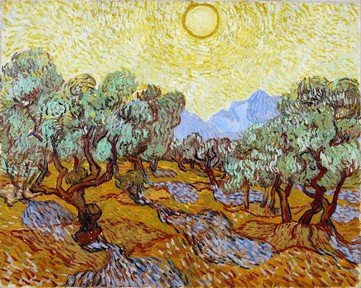Quiz Answer Key and Fun Facts
1. Dating to the early 17th century, "Village Street" is typical of the 'paradise landscapes' produced by this wonderful artist who is also known for his floral still life paintings. Who is this Flemish artist?
2. Painted around 1600, "Portrait of a Lute Player" is a work by an early Baroque artist from a family of painters out of the Bologna School. He is probably best-known for his frescoes, a form often considered a true test of a painter's skill. Who is this Italian artist?
3. Painted in the mid-17th century, "Santiago in the Battle of Clavijo" was painted by an Asturian artist best known for his royal portraits, having served as the official court painter to the Spanish queen from 1671-85. Who is this artist?
4. Painted around 1650, "Equestrian Portrait of Pieter de Roovere" is the work of another member of a famous painting family. Particularly known for his large views of the Dutch countryside, he was one of the most important Dutch landscape painters of the 17th century during the Dutch Golden Age. Who is this artist?
5. Painted in the early 1630s, "Bacchanal Before a Statue of Pan" is typical of work by the leading painter of the classical French Baroque school. He is best known for his history paintings of religious or mythological subjects, although he also produced numerous portraits in his two decades as "First Painter to the King". Who is this artist?
6. Painted in 1635, "Charles I at the Hunt" depicts perhaps the most passionate art collector ever to sit on the English throne. This Flemish artist was the most prominent of the many foreign masters with whom King Charles I surrounded himself, and he is particularly known for his portraits of the royal family. Who is this artist?
7. Painted around 1640, "Still Life with Basket of Glasses" is a work by the most important German still life artist of the Baroque period. Many of his works were lost, but rediscovered in the 1930s. He spent much of his working life in Paris. Who is this Alsatian artist?
8. Dating to 1599-1600, "The Calling of Saint Matthew" is one of three of this artist's works that decorate the church of 'San Luigi dei Francesi' in Rome. Many critics heralded him as a great artistic visionary and his style has a distinct influence on Baroque painting. Who is this early Baroque Italian artist?
9. Painted in 1661-62, "Charles II of England in Coronation Robes" is a work by a British artist who was the principal court artist to King Charles II and, later, also worked for James II. Noted for the realism in his portraits, he is widely considered one of the most important British painters of his era. Who is this artist?
10. Painted around 1670, "Windmill at Wijk bij Duurstede" is a work by the pre-eminent landscape painter of the Dutch Golden Age. A member of a family of Haarlem landscape artists, he was a prolific painter of outstanding Dutch countryside scenes. Who is this artist?
Source: Author
EnglishJedi
This quiz was reviewed by FunTrivia editor
looney_tunes before going online.
Any errors found in FunTrivia content are routinely corrected through our feedback system.

